On all the Fishy names of an Indo-European Reptile
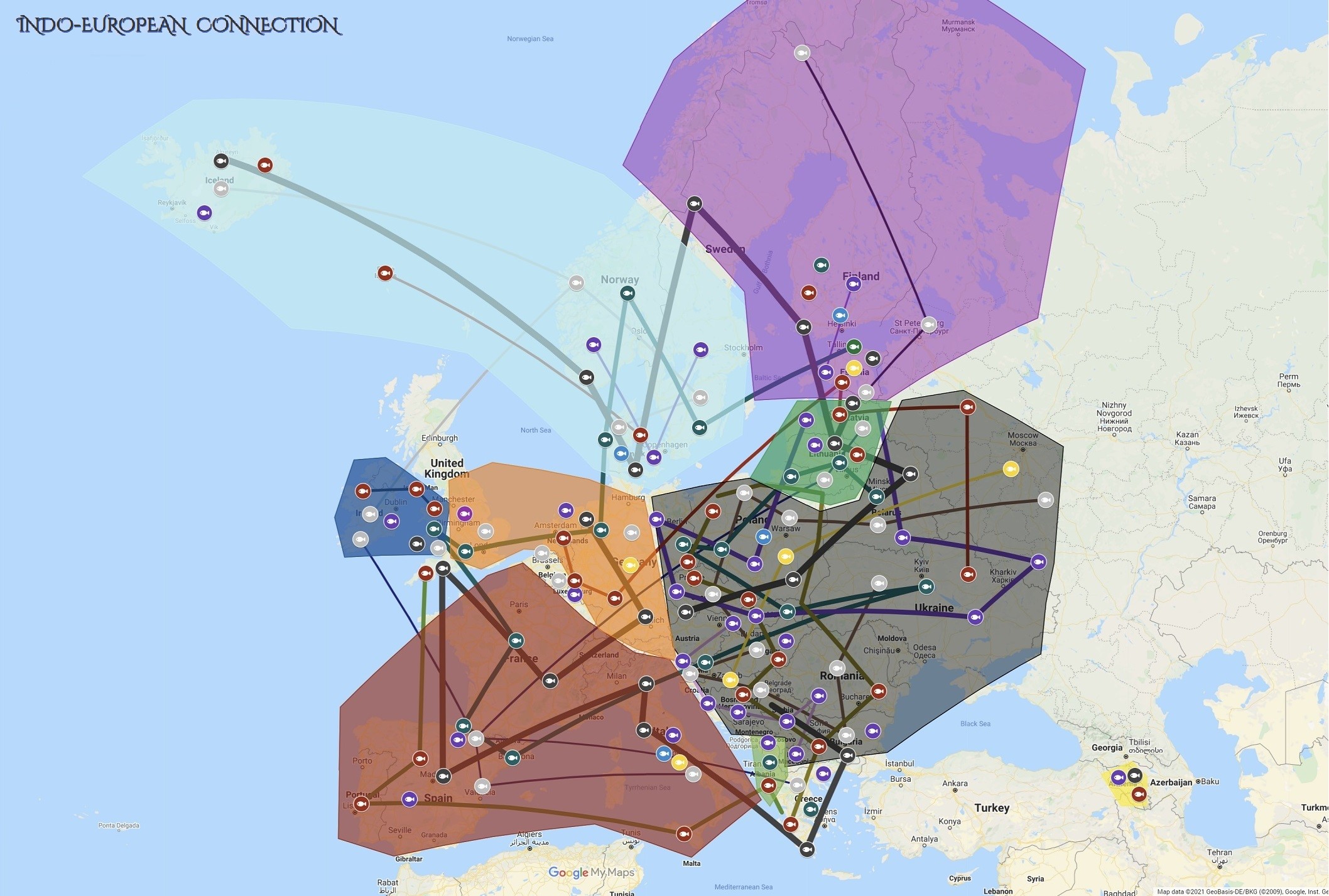
Today I spent my whole day connecting words for certain fish species in all European languages because I wanted to give an answer to a question if those names are of Indo-European or Old European origin and below I can finally present you the fascinating results of my hard work.
The world's oldest fish hooks (they were made from sea snail shells) were discovered in Sakitari Cave in Okinawa Island, Japan and they were dated to 20380 BC - 20770 BC. They are older than fish hooks from the Jerimalai cave in East Timor dated between 21000 BC and 14000 BC and those from New Ireland in Papua New Guinea dated to 18000 BC - 16000 BC. The earliest fish hooks in the Americas, dated to about 9000 BC, have been reported from Cedros Island on the West coast of Mexico.
It means that European and Anatolian Hunter-Gatherers used hooks for fishing before the spread of Indo-European Corded Ware Culture around 3000 BC and indeed the oldest European fish hooks dated to 10300 BC were found in Wustermark, Germany. They were made from mammoth and elk bones[1]. The oldest fish hooks from Southern Norway and Central Sweden go back to 8300 BC - 6300 BC[2].
Certainly the Eastern European Hunter-Gatherer speakers of the Indo-European language did not have to teach other European Hunter-Gatherers (Western, Scandinavian and Anatolian) how to name this "hook thing" but what was its name? Most probably "ankis", very similar to one of Indo-European names for a snake: angis, this literally could be the Europe's oldest word and it would mean "crooked" and "bent".
A rod from a hooking angle
In Armenian language "կարթ (kartʿ)" means a "fish hook" and "կարթաձող (kartʿajoł)" means a "fishing rod" or rather literally "a rod with a hook" or "a hooked rod". In Finnish "hook" is "koukku" and the one used for fishing is "ongenkoukku" because "onge" or "onki" is "fishing rod". Very good Caucasian Hunter-Gatherer connection might also be Georgian "კაუჭი (ḳauč̣i)" and "ანკესი (anḳesi)", both meaning "hook".
Other words following this pattern are:
- fish hook:
- Sanskrit: अङ्क (aṅká)
- Old Irish: ǽcath (aekath)
- Latvian: āķis
- Ancient Greek: ἄγκιστρον (ánkistron)
- Norwegian Bokmål: angel, fiskekrok
- Norwegian Nynorsk: ongul, ongel
- German: Angelhaken
- German: Angel ("fishing rod")
- *Finnish: onki ("fish hook" and "fishing rod")
- Old Church Slavonic: ѫкоть (ǫkotĭ, onkoti)
- Dutch: hengel ("fish hook" and "fishing rod")
- Ossetian: ӕнгуыр (ænguyr) ("fishing rod")
- Old Armenian: անգղ (angł), անկղ (ankł) ("hook")
- Sanskrit: अङ्गुली (aṅgulī) ("finger", resembling a hook or bent part of a hand)
- Ossetian: ӕнгуылдз (ænguyldz) ("finger")
Dutch "hengel" might point to a missing hard "KH" in the words above:
- German: Haken
- Polish: haczyk
- Icelandic: haki, krókur
- Tajik: чангак (čangak)
- *Turkish: kanca
- Danish: huk
- Bulgarian: ку́ка (kúka)
- *Finnish: koukku
- *Mongolian: хуукууд (khuukuud)
- crooked:
- Ancient Greek: ἀγκύλος (ankúlos)
- Tocharian A: ānkar ("tusk of an elephant", probably mammoth's too)
- Tocharian B: āṅkär ("tusk of an elephant")
- *Hebrew: עקום (akúm)
- *Sundanese (Indonesian): anggaresol
- Bulgarian: ъ́гъл (ǎ́gǎl) ("angle")
- Ancient Greek: ὄγκος (ónkos) ("bent, curve, angle, barb, grapple, hook)
- Old Church Slavonic: ѫгълъ (ǫgŭlŭ, ongulu) ("corner, angle")
- Latin: uncus (unkus) ("bent")
- Polish: węgieł (uenkiel) ("angle, corner")
- Irish: crúca (kruka) ("fish hook")
- Russian: крюк (krjuk) ("fish hook")
connected fish species
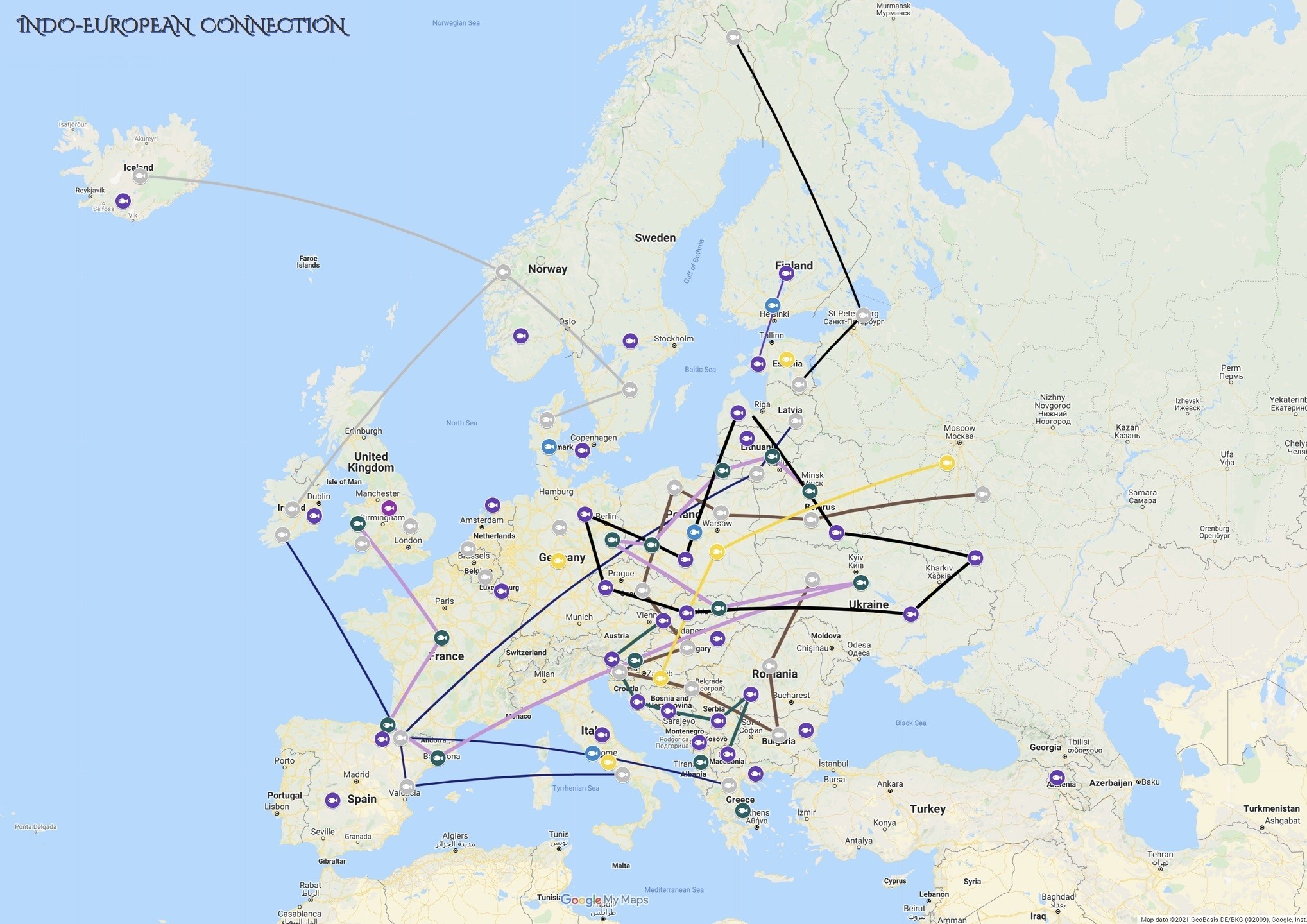
There is only one fish name portrayed on this map that probably originated in the Indo-European language (a case similar to the salmon problem) and that is Sturgeon (Acipenser oxyrinchus from Acipenseridae), marked with light green fish icon. The "Acipenser oxyrinchus" from North America replaced the "Acipenser sturio" in the Baltic Sea around 3000 BC - 2000 BC[3]. There are bones of that fish found in the archeological sites from Wolin island and Gdańsk, it might also be portrayed in one of petroglyphs from Besov Nos (Бесов Нос) in Russia. The names for "sturgeon" in all European languages are the following:
- Old Prussian: esketres
- *Basque: gaizkata
- Croatian: jesệter
- Slovakian: jeseter
- Polish: jesiotr
- Spanish: esturió
- French: esturgeon
- Upper Sorbian: jasotr
- Belarusian: асётр (asjótr)
- Lithuanian: ašėtras
- Welsh: stwrsiwn (stursiun)
- Latin: sturio
- Norwegian: stør
- *Estonian: tuur
Pike (Esox lucius) is marked with light gray color icon and creates a strong connection between all Slavic languages, Romanian and Moldavian. Somehow Basque "lutxo (lut-ho) arrunt" forms a cluster only with Greek "λούτσος (loútsos)", Lithuanian "lydeka" and Latvian "līdaka" maybe because it is a Western European Hunter-Gatherer word for that fish. Lithuanians and Latvians have more than 50% of their autosomal DNA derived from the WHG population. This fish also plays an important role in the Finnish story called "Kalevala".
Chub (Squalius cephalus, Leuciscus cephalus) is marked with light blue icon but it does not form any clusters, each European language has its own name for this fish except for Slavic and Romanian. It is "stam" in Norwegian, "clean (klean)" in Romanian, "kleń" in Polish, "klijen" in Bosnian, "šapalas" in Lithuanian, "Галавень (galaven')" (literally "head fish") in Belarusian, "katxo arrunt" (literally "cat fish") in Basque, "kopvoorn" in Dutch, "turpa" in Finnish.
The yellow icon is the Leuciscus idus that forms a connection only in all Slavic languages (marked are: Polish, Croatian and Russian) and its name "jaź", "jez", "jes" literally means "light". That fish has a bright golden color and that is why also in Ancient Greek its name was "λευκίσκος (leukískos)", which means white. Its other names are: "orpha", "orfa", "aland", "säinas", "idus".
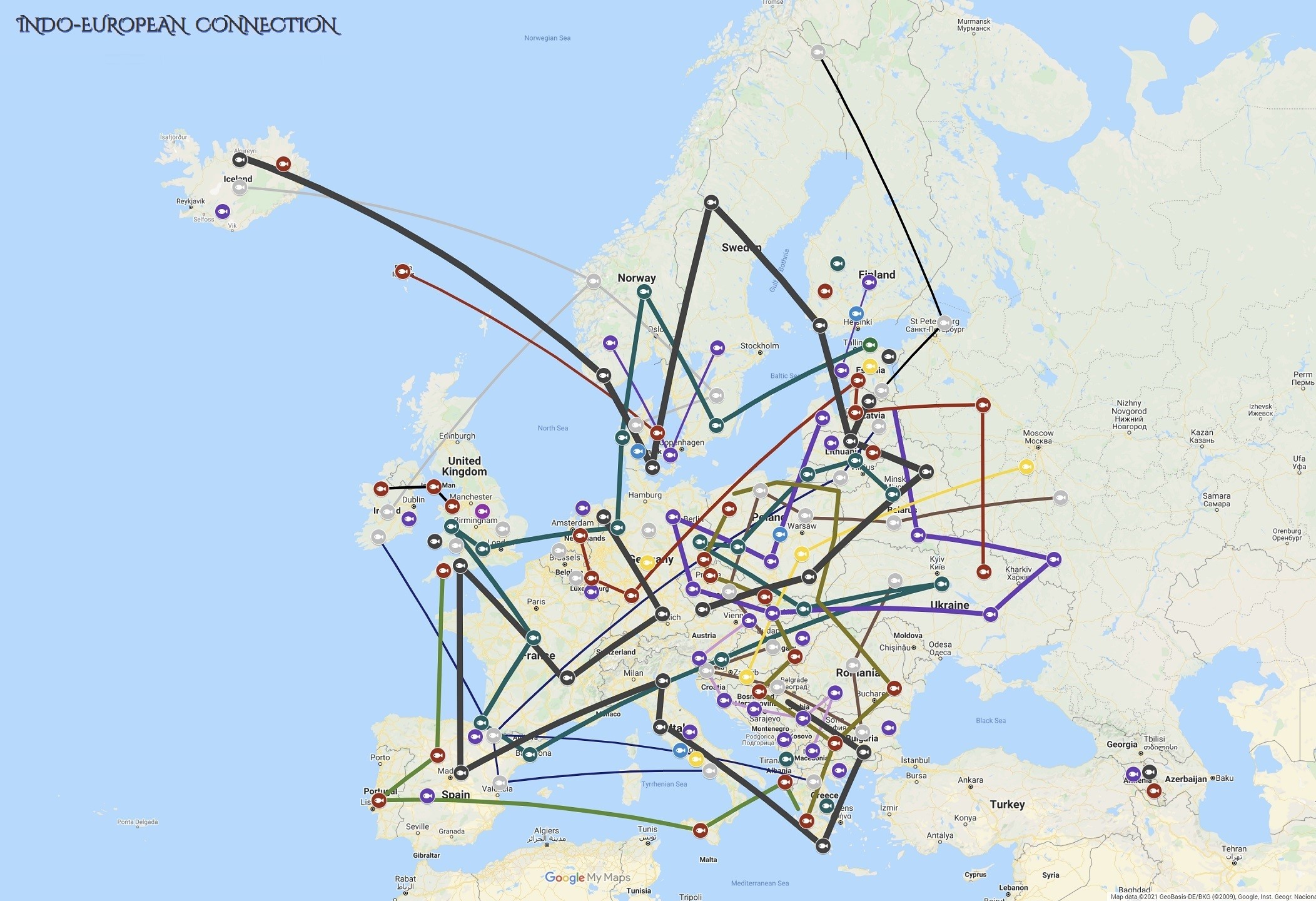
Sander (Sander lucioperca) is marked with purple icon, it is a fish similar to a "pike" so it follows similar naming patterns and forms similar clusters, for example in Dutch its name is "snoekbaars" (literally "pike perch") and "snoek" is "pike" in Flemisch. In Romanian "sander" is "biban de știucă" (literally "perch pike") and "pike" is "știucă", same pattern in this name differentiates the Northern Slavic languages from Southern Slavic languages.
The name "pike" is repeated in many names of "sander" in Western Europe: Irish "péirse pike", Basque "pikotxoa" and "perch pike" in English. In general names for "perch" (Perca) form the same clusters as those for a "pike": Albanian "sharrok" is isolated, Slavic has "okun", Western European languages have "perche", "péirse", "perca" and Scandinavian forms its own cluster with "abbor" just like Finnic languages do with "ahven". Romanian "biban" and Bulgarian "ко́стур (kóstur)" are the exceptions here but both are combined with "pike" in their language to form a name for "sander".
Trout (Salmo trutta) is marked with red icon and its name forms a connection between the West Indo-European name for a fish (Latin "pisces", "piscēs") and Slavic languages that are considered to lack this name (instead there is "ryba" and "riba", but this will be explained in great detail below). Only in Eastern European languages the trout's name begins with "ps" or "pes" and ends with "trong", "trung", "truh" or "troft". In Romanian it is "păstrăv", in Bulgarian "пъстърва (pǎstǎrva)", in Hungarian "pisztráng" and in Greek "πέστροφα (péstrofa)" and it is the Greek language that forms a connection with Albanian "troftë", simply by losing its "pes-".
That is why in English it is "trout", in Latin it is "trutta" and it also forms a synonym for "pstrąg" ("trout") in Polish: "troć" meaning "diadromous trout". Other languages supporting the initial "ps-" and "pes-" as meaning "fish" are: extinct Northern Caucasian Ubykh word "psa", Greek "ψάρι (psári)", Venetian "pese" and Romansch "pesch", all meaning "fish".
Torut is losing that pes-trut cluster in Westeren Europe because in Celtic languages its name becomes: "brecc", "brack" and "Die Forelle" in German (all names for "trout" in Eastern Slavic and Estonian are "forel"), then Scandinavian "ørred" forms its own cluster.
Herring (Clupeidae) is marked with a black fish icon and a black thick line. Its names form two clusters: first cluster appears in Eastern and Central Europe, and Scandinavia (related to Old Norse "síld", Czech "sleď", Finnish: "silakka") and second cluster appears in Western and Southern Europe, for example Cornish "hernen wynn", Latin "aringus", German: "hering" and Greek "ρ"έγγα (rénga)". In the Basque language a "fish" is "arrain" and that might be the source of its second cluster's name.
Wels catfish (Silurus glanis) was not placed on the map but most of Western European (R1b) languages derive its name from Latin "silūrus". Its Baltic names (Latvian "sams" and Lithuanian "šamas") are closest to Slavic and Romanian words for wels catfish: "som, somn, sum, sumec". German word "Wels" again forms its own cluster separated from other languages. One might say that the Indo-European fish names are very fluid.
The Crawlers, Creepers and Wrigglers
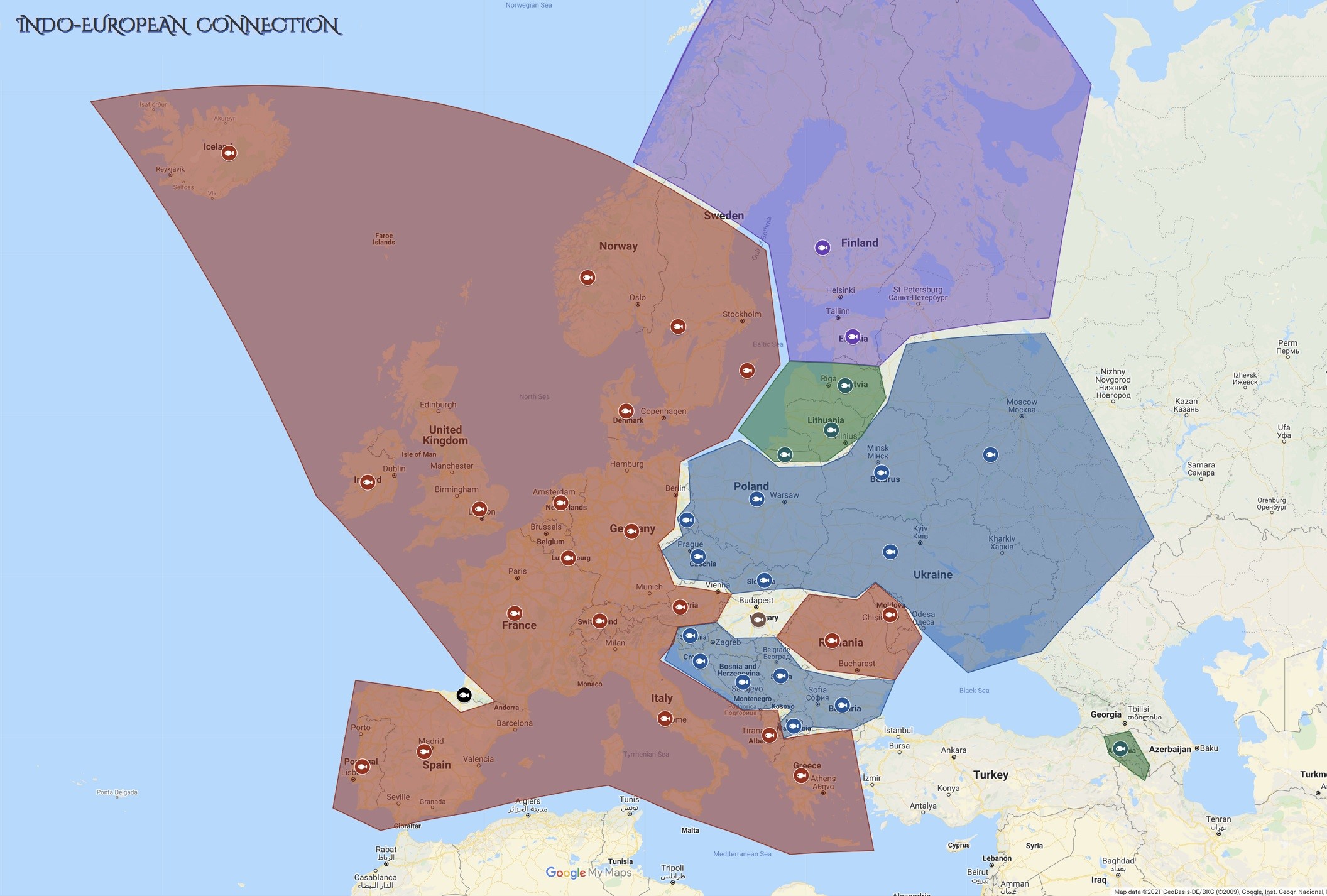
Scandinavians named two different fish species (pike and sander) in a simple manner: "gedda" - "gedde" - "gädda", a name that is probably related to Old Church Slavonic and Polish language word for a reptile: "gad" (not present in other Slavic languages). A family species of "cod" in Latin is "gadidae" and Ancient Greek name for "cod" and "fish" is "γάδος (gádos)". That is why also Welsh name for a "fish", that is "pysgodyn", might come from two European words for a fish: "pys" and "godyn".
Only in Slavic languages a word for a "fish" is "rëba" - "ríba" - "ryba" and maybe it is connected to Latin verb "rēpō" meaning "to creep". German names for "Lota lota" fish are "Ruppe" and "Aalraupe", this fish usually "crawls" and lives at the bottom of a river. For European Hunter-Gatherers all those 3 classes of animals (fish, reptiles and amphibians) were simply "creepers". In English "to creep" means "to move slowly with the abdomen close to the ground". They did not follow a scientific method so they did not distinguish them biologically. A "reptile" in Latvian is "rāpuļi" and in Lithuanian it is "roplys" but in Polish "ropucha" is a "toad".
One interesting fact is that a Slavic name for a "frog" is "żaba", also found in Albanian as "zhabë" and in Old Prussian as "sapo". Those words form a connection only with Arabic "زَحَفَ (zaḥafa)", "دَبَّ (dabba)" and Egyptian Arabic "حبى (ḥaba)", all meaning "to crawl" and mabye this Slavic "żaba" is the source of Jabba's name.
In Slovak, Slovenian and Czech "plaz" means a "reptile" but in Polish it means "amphibian". In Bulgarian there is a verb "пълзя́ (pǎlzjá)", in Czech "plazit se", in Croatian "plaziti", all meaning "to crawl". The same meaning is kept in an Ancient Greek verb "ἕρπω (hérpō)", that is a cognate source for all "serpentine" creatures, still meaning "crawlers, creepers". In Latin that verb is "rēpō" and a source of all "reptiles", interestingly same cognate verb exists in Latvian as "rāpot" and Lithuanian as "ropoti".
One such "fish" (piscis) or rather "swimming reptile" would be Misgurnus fossilis. Its name in Polish is "piskorz" but in other languages except Czech and Slovakian its name is totally different. In Russian it is "Виюн (vijun)", in Estonian "vingerjas" (similar to Slavic name for an "eel") and in Lithuanian "vijūnas", all three from verb meaning "to writhe, wriggle".
In Bulgarian a "reptile" is "влечуго (vlechugo)" a name that comes from verbs "влече (vleče)" and "wlec" meaning "to drag on the groud". The Scots Gaelic name for a "reptile" is "snàgairean" and "snag" in Irish also means "small fish" (goby). Sander in Dutch is "snoekbaars" (also called "zander" in the past) but "snoek" is "pike (esox lucius)" in Flemisch (Flanders). A name closest to the European Hunter-Gatherer vocabulary and an explanation to all those names for fish and reptiles in Western Europe is Old Irish: "snaighim" meaning "to creep", also a source for Germanic "snake" and Hindu "naga".
Gadus Morhua
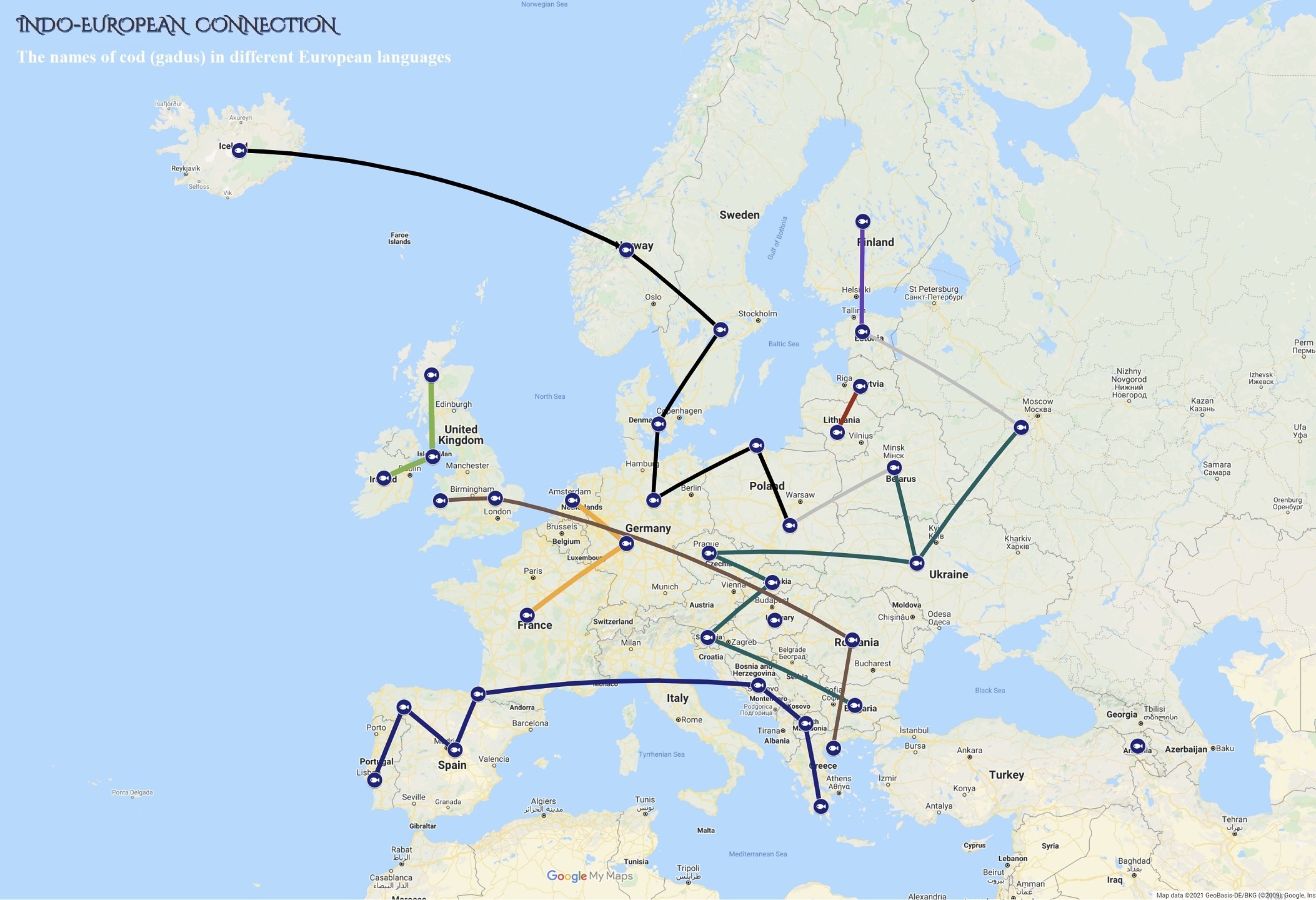
The map above portrays the different names of a Cod (Gadus morhua) in European languages. Actually "cod" in English (from "kod" or "gad") continues the original Indo-European meaning of a "reptile" and "creeper" because it is cognate to Greek "γάδος (gádos)", which means both "fish of any kind" and "cod". East and South Slavic languages named this fish "treska", a name connected to an amphibian "newt" called "traszka" in the Polish language, but a proper Polish name for "cod" is "dorsz". This name is connected only to Scandinavian "torsk" and German "Dorsch".
Most probably because of a common Funnelbeaker Culture heritage (this would also explain the herring's case described before). Estonian and Finnish languages also form a cluster here with their "tursk". A presence of this word in so many Eastern European languages would rather suggest its Corded Ware Culture origin rather than the Funnelbeaker Culture, still both of those cultures already had the Eastern European Hunter-Gatherer and Western European Hunter-Gatherer DNA but the following words deny its WHG origins:
Baltic languages again form a separate cluster with their "menkė" and "menca". Same goes for Western Celtic languages around Ireland with "boiddagh". Basque related "bakailaoa" appears in Bosnian, Croatian, Serbian and North Macedonian as "bakàlār", which might form a I2 Y-DNA Southern European Hunter-Gatherer or Early European Farmer connection connection. It also appears in Portugal and Spain as "bacallau".
French, German and Dutch form a West Germanic or maybe Gaulish cluster with their unique name for cod: "cabillaud", "kabeljauw", "kabeljau". Armenian name "ձողաձուկ (jołajuk, dzoładzuk)" stands out as usual and its name simply means "rod fish" because cod is not a fish native to Armenia.
Conclusion and extras

In Europe there are 9 main clusters of names for different fish species: Finno-Ugric (purple), Scandinavian (light blue), Baltic (green), Slavic (black), Albanian (light green), Armenian (yellow), Latin (red), West Germanic (orange), West Celtic (dark blue) .
In Albanian "peshkimi" literally means "to fish" or rather "fishing". The same semantic meaning of a verb is kept in Basque "arrantzatu" because as was shown above it dervies its name from "arrain", that is why if "pecati" in Bosnian means "to fish, angle, dap", then it is possible reconstruct the other Slavic name for a "fish" as "pec" or "pes". In Bosnian there is also other verb meaning "to fish" and that is: "ribariti" and is obviously connected to a common Slavic "riba" meaning "fish".
There also might be a third verb connected to "fishing" hidden in Slavic languages and that comes from the name of a "fishing rod" but also from a name of a "hook" in Old Polish: "węda, wędka". Its closest cognate might be an Old Armenian word "վանդակ (vandak)" meaning "network made from threads, fishing net" and a verb in the African Bantu Chichewa language "kuwedza" and "wedza", both meaning "to fish". All those words would come from a verb meaning "to lure", probably going back to the times of fishing with a net. In Finnish "viehättää" means "to lure, to attract" and "viehe" is "fishing bait", this would come from an earlier Indo-European "*viese" akin to Polish "wieść".
Aztec languages have an interesting name for a fish: in Classical Nahuatl "michin (mitsin)", in Eastern Huasteca Nahuatl "michi", in Pipil "michin", Pochutec "michoʹm". This would mean that Sanskrit "मत्स्य (matsya)", Avestan "masya", Persian: "ماهی (maahi)", Hindi "मछली (machlī)" would have the Ancient North Eurasian origin instead of BMAC. Maybe this name was still preserved and used by some of the Eastern European Hunter-Gatherers because in the Latvian language "makšķere" means "fishing rod" and "makšķerēt" means "to fish", by following the pattern created above, another word for a "fish" in the Latvian language would be "*makšķe" or Lithuanian "menkė" and Latvian "menca (mentsa)", both meaning "cod". In Belarusian "lota lota" is "мянтуз (miantus)" and in Polish it is "miętus".
The Erzya language might be the key to solving this problem because "Lota lota" in this language is "ментюк (mentiuk)" but also "максарь (maksar)". In Finnish it is "made" and "matikka". In Korean "a fisherman" is "낚시꾼 (naksikkun)" but in Korean "낚시 (naksi)" means a "fish hook" or a "hook". So maybe Ancient North Eurasian name for a "fish" was literally "this what is hooked from the water" or "the hooked one".
Article created on the 6th and 7th of October 2021.
When constructing this article I did not read any Indo-European books on the fish related topics, I worked on the raw linguistic data from different languages. It means that all the theories and conclusions above are my own and belong to the Indo-European Connection.
